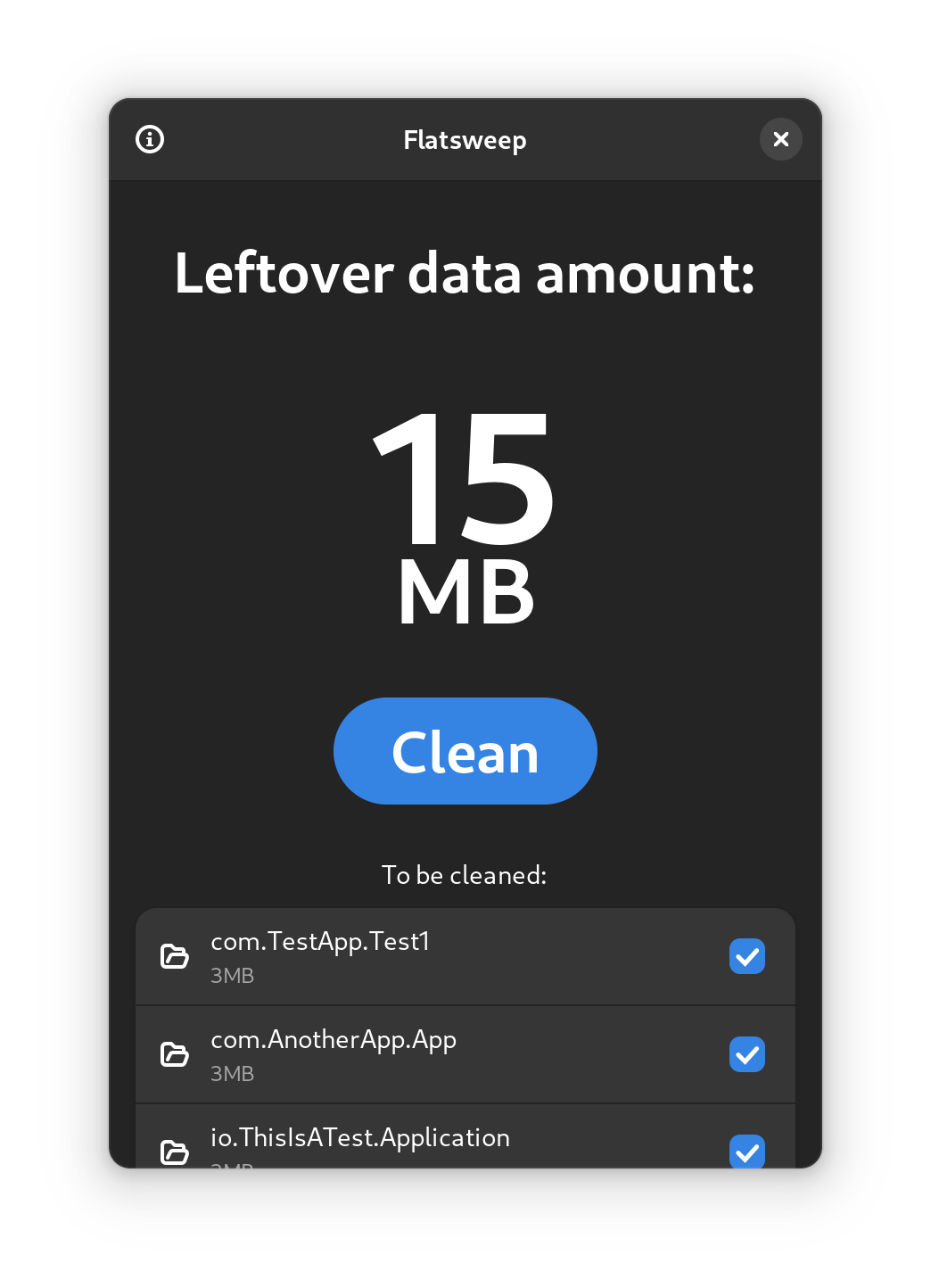If you want to translate Flatsweep into another language, please read the Translating section under Contributing. The .po files are only for the appstream, and not for the app itself.
When you uninstall a Flatpak, it can leave some files behind on your computer. Flatsweep helps you easily get rid of the residue left on your system by uninstalled Flatpaks.
Flatsweep uses GTK4 and Libadwaita to provide a coherent user interface that integrates nicely with GNOME, but you can use it on any desktop environment of course.
Caution: Flatsweep exclusively looks at the default Flatpak install directory. If you have set a custom install path, it might accidentally delete files that weren't supposed to be deleted. If you have no idea what a 'custom install path' is, you'll be fine.
| Language | Application | Appstream |
|---|---|---|
Flatsweep was made with GNOME Builder, thus it is the program I recommend you to use when building it. Simply copying this repository into your system and opening it with GNOME Builder will allow you to build it with relative ease.
Contributions are always welcome! And also, here is a guide on how you can translate Flatsweep into your native (or not) language:
Localization in Flatsweep is done with separate Python files next to the main.py file. You can start by copying and pasting the "lang_en.py" file and name it according to the language you want. For example, "lang_es.py" for Spanish. In the language file you'll find many different variables with their text equivalents. Do not change the variable names, only change the bits that exist in between quotes.
After creating the file, you have to go to the main.py file, and near the top, you will find a section named "TRANSLATIONS BEGIN". This is a set of if/elif/else statements. Before "else:", you should create an "elif" statement. Here is an example for Spanish:
elif currentLanguage.startswith("es"):
from flatsweep import lang_es as langKeep in mind, spacing is important in Python, so make sure the indentations are correct.
This is how it should look like after everything:
#...
elif currentLanguage.startswith("es"):
from flatsweep import lang_es as lang
else:
from flatsweep import lang_en as langThen, you have to go to the meson.build file that exists in the src folder, find the section called "flatsweep_sources", and add your language file at the end.
Here is an example of how it may look like beforehand:
flatsweep_sources = [
'main.py',
'lang_en.py',
'lang_tr.py'
]
... and this is after you add Spanish:
flatsweep_sources = [
'main.py',
'lang_en.py',
'lang_tr.py',
'lang_es.py'
]
That's all there is to it.
You can also translate the appstream information. This is done within the "po" directory. You can use a program like Poedit to do this. After adding your language (e.g. es.po) you should also add the language line (e.g. es) into the "LINGUAS" file.
Flatsweep is licensed under the Mozilla Public License 2.0.
- Logo remaking and Spanish translations by @M-Duardo
- Bulgarian translations by @RacerBG
- Italian translations by @albanobattistella and @Methoko
- Russian translations by @vorons
- Czech translations by @Amerey
- German translations by @saxc
- Greek translations by @Christosgm
- Chinese translations by @sauntor
- Polish translations by @unsolaci
- French translations by @rene-coty
- Belarusian translations by @k1llo
- Brazilian Portuguese translations by @mblithium
- Arabic translations by @zefr0x










